
| Tailed Rustic HELICONIINAE, NYMPHALIDAE, PAPILIONOIDEA | (donherbisonevans@yahoo.com) and Stella Crossley |
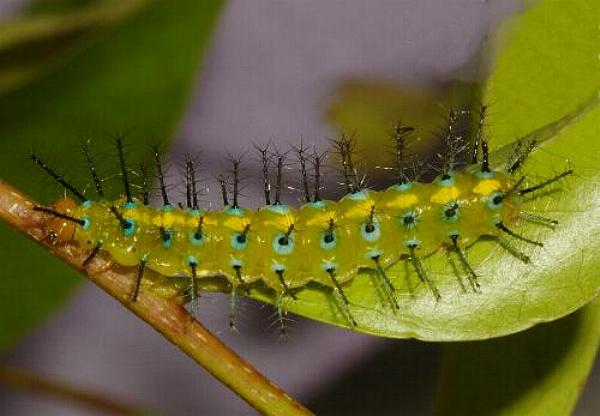
(Photo: courtesy of Bart Hacobian, Millaa Millaa, Queensland)

| Tailed Rustic HELICONIINAE, NYMPHALIDAE, PAPILIONOIDEA | (donherbisonevans@yahoo.com) and Stella Crossley |

(Photo: courtesy of Bart Hacobian, Millaa Millaa, Queensland)
The Caterpillars of this species are green or brown with a white lateral line each side. They have black branched spines and a brown head. Young caterpillars are inclined to hang on silk threads at night. This may protect them from roaming predators. The caterpillars feed on plants in SALICACEAE including
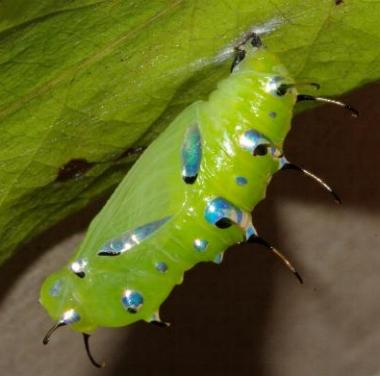
The pupa is green and spiky, with silver spots. Its length is about 2 cms. It is formed hanging head downward from a cremaster under a leaf at an angle to the vertical.
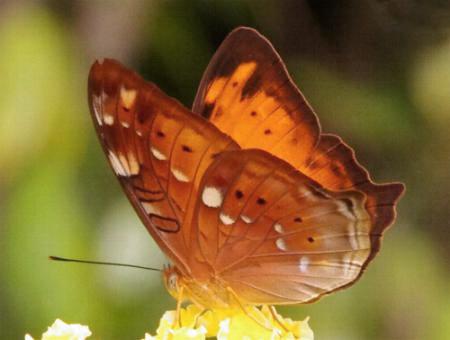
The wings of the adult butterflies are orange with dark brown edges to the wings and some sparse dark brown markings. The undersides are orange-brown with arcs of white, black, orange and grey spots. The butterflies have a wingspan up to 6 cms.
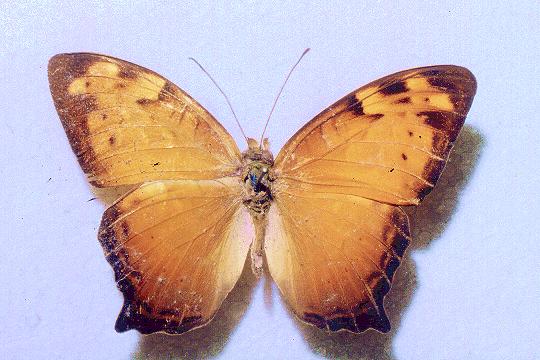
The eggs are greenish yellow and spherical. They are often laid singly on plants adjacent to, but not on, the foodplant. The female butterflies have been observed laying their eggs on dead twigs, or on debris at the foot of a foodplant. This appears to be a response to a defence that some plants have developed against caterpillars. These plants secrete a juice in response to an egg being laid on them. The juice causes mould to grow which kills the egg.
The species has been found as various subspecies across south-east Asia and the south-west Pacific, including:
and the subspecies propinqua (Miskin, 1884) has been found on the tropical north-east coast of Australia in
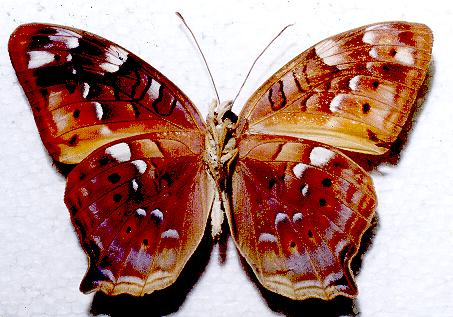
Further reading :
Michael F. Braby,
Butterflies of Australia,
CSIRO Publishing, Melbourne 2000, vol. 2, pp. 544-545.
Pieter Cramer,
Description de Papillons Exotiques,
Uitlandsche kapellen voorkomende in de drie waereld-deelen,
Amsterdam Baalde, Volume 3 (1780), p. 158, figs C, D, and also
Plate 281, figs C, D..
Garry Sankowsky,
Unusual egg-laying strategies of some Lepidoptera,
Butterflies and Other Invertebrates Club,
Metamorphosis Australia,
 caterpillar |  butterflies |  Lepidoptera |  moths |  caterpillar |
(updated 9 May 2008, 26 November 2025)